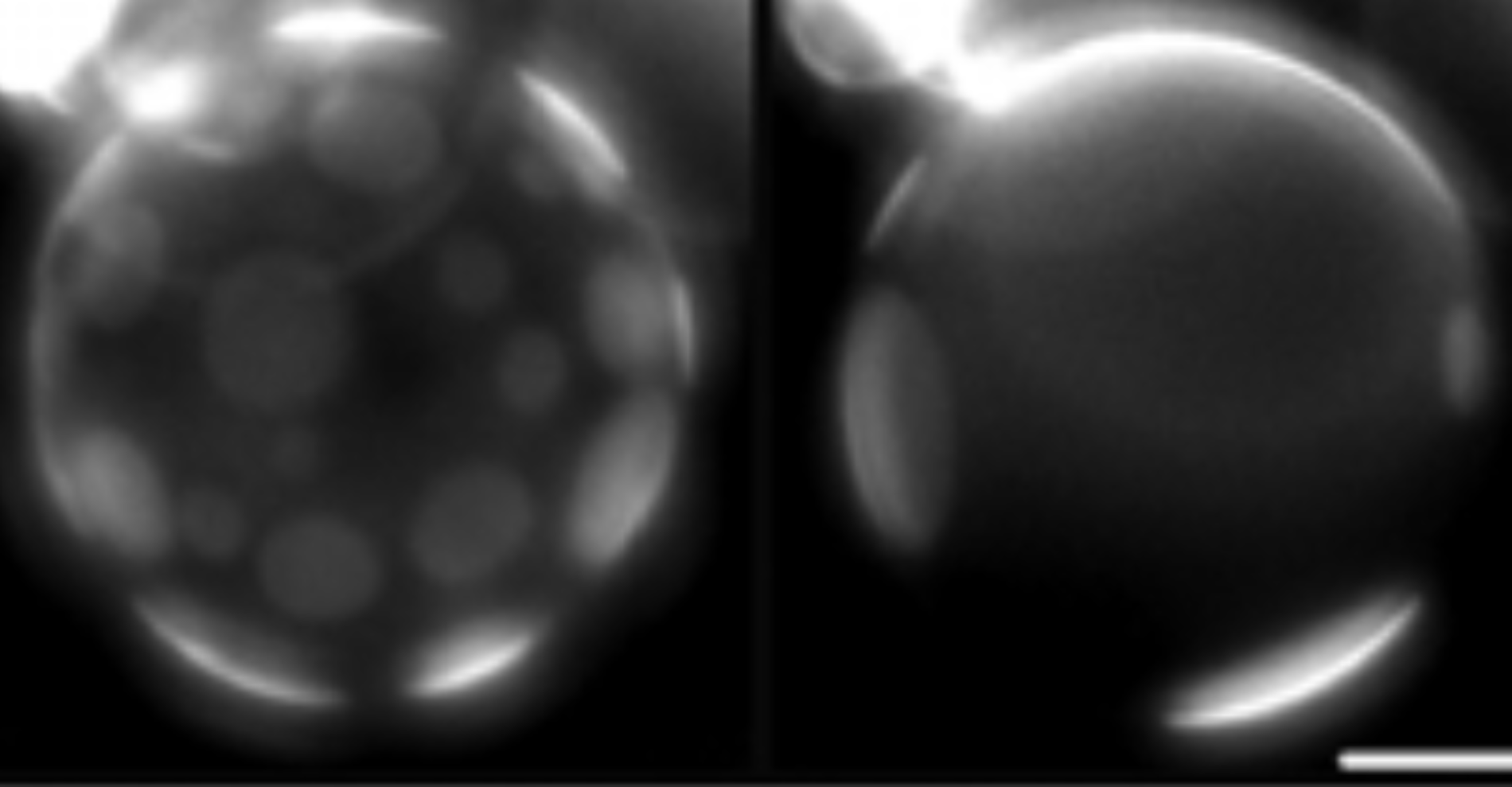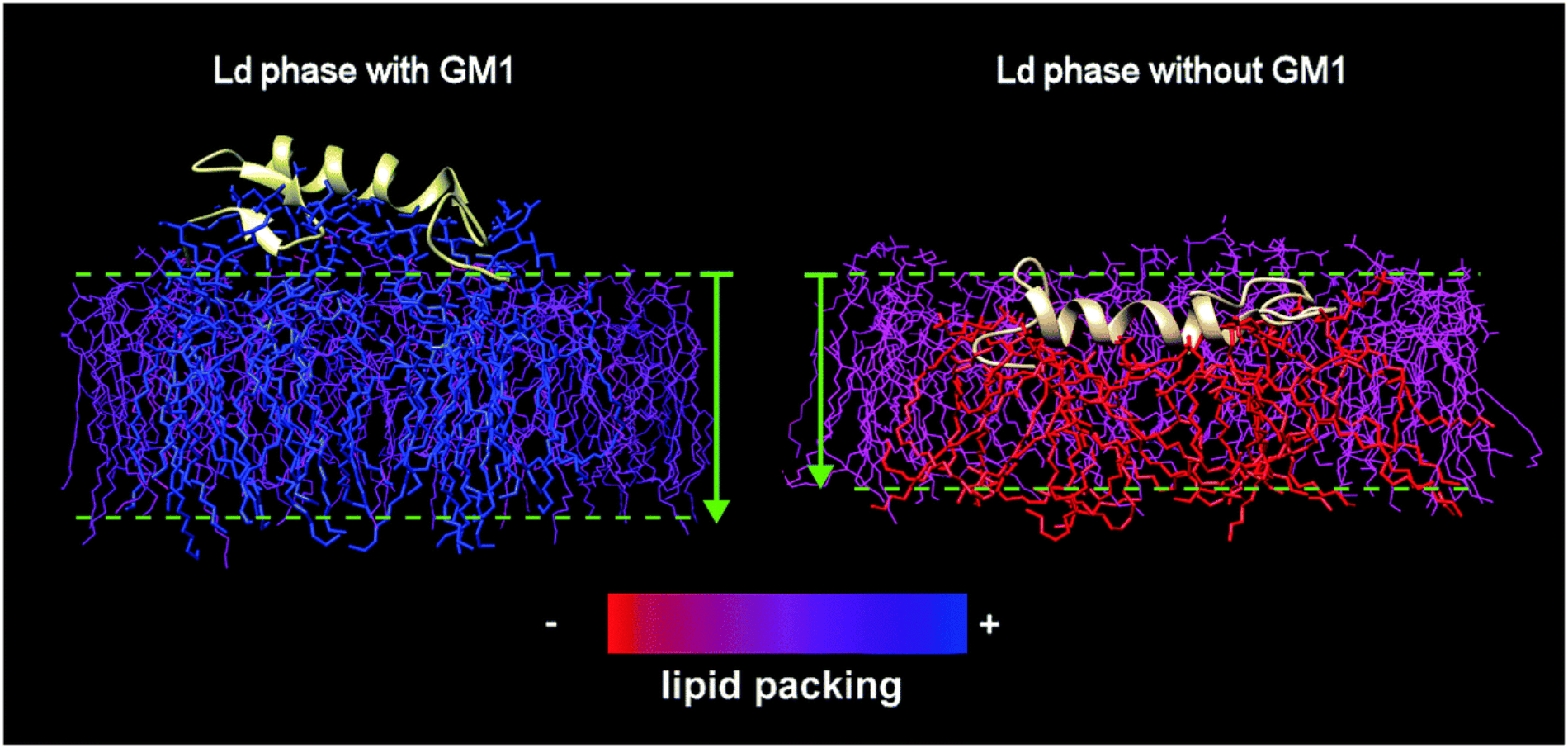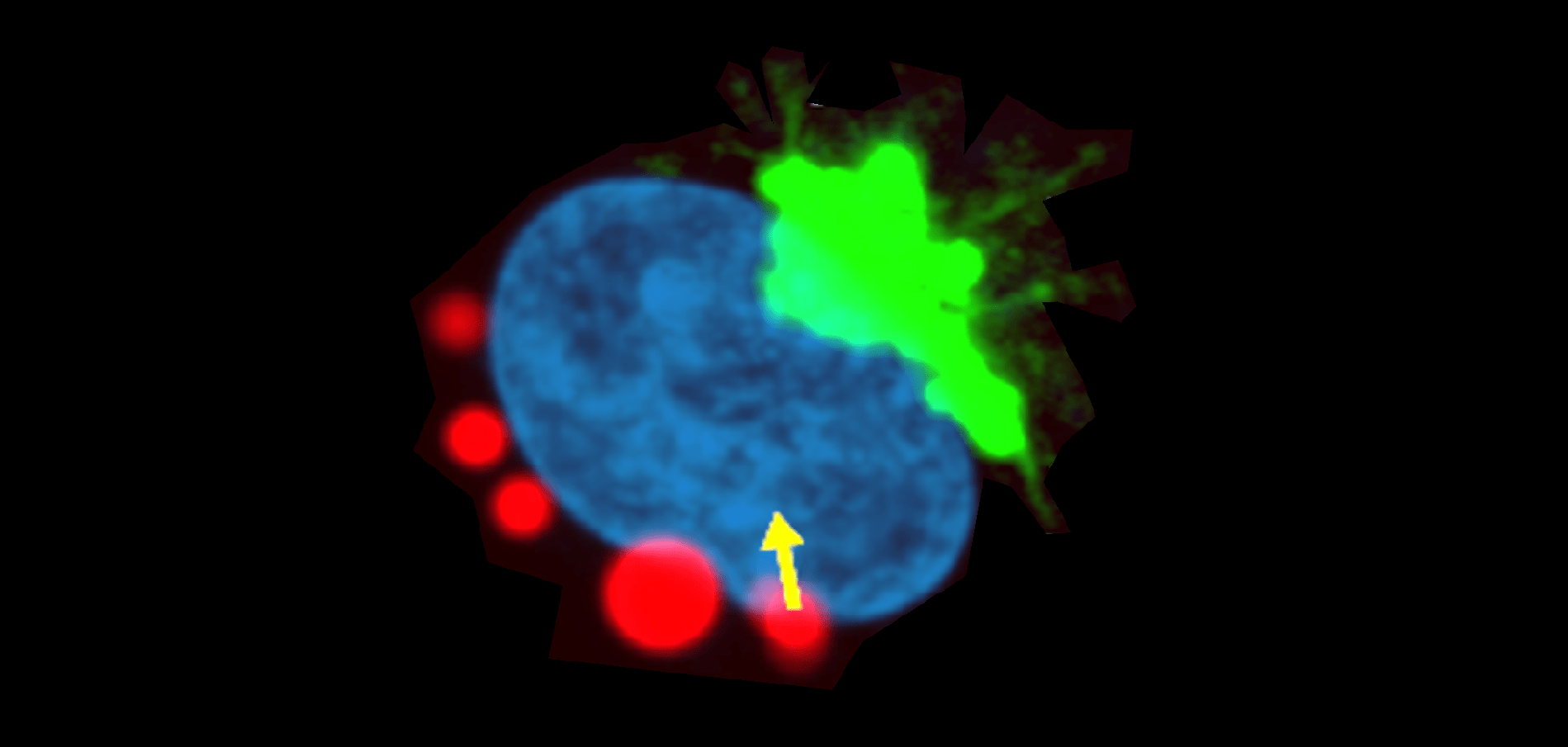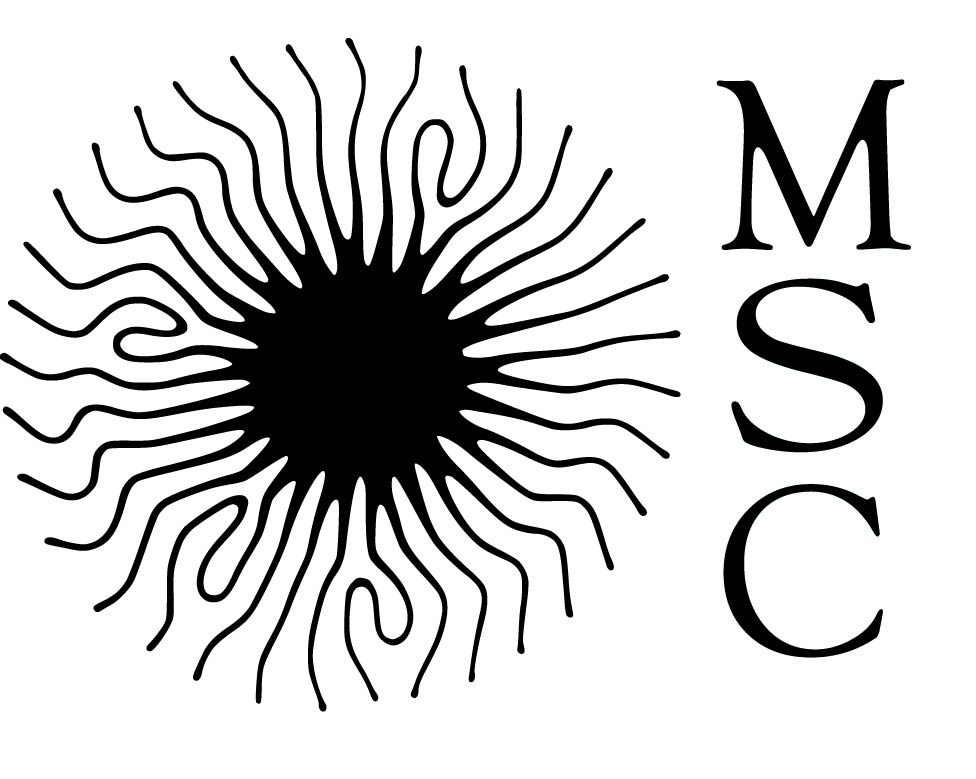Physics of biological membranes

Biological membranes not only separate the cell from the external environment, but also delimit intracellular organelles, for instance the compartments involved in the synthesis and transport of molecules within the cell. Their physical properties play a central role in many cellular functions. We study these properties using both cellular models and in vitro biomimetic approaches, mainly large and giant unilamellar vesicles (LUV and GUV).
Members
- Miglena Anguelova, Professor (Sorbonne Université)
- Jean-Baptiste Manneville, Research Director (CNRS)
- Nicolas Puff, Senior Lecturer (Sorbonne Université)
- Chandini Bhaskar-Naidu, PhD student

Model membranes
We develop experimental model systems of the living cell, reproducing the heterogeneous structure of the lipid membrane and its dynamics induced by the formation, in its close environment, of gradients of chemical composition, as well as the directional deformation of a lipid bilayer guided by a localized chemical gradient. We are currently very interested in certain physicochemical and membrane-related aspects of Alzheimer’s disease, as well as the mechanotoxicity of Amyloid beta and the cross-talk between Alzheimer’s disease and cancer.
Find out more
Some articles
Dynamics of biological membranes
Impact of truncated oxidized phosphatidylcholines on phospholipase A2 activity in mono- and polyunsaturated biomimetic vesicles . Yordanova V, Hazarosova R, Vitkova V, Momchilova A, Robev B, Nikolova B, Krastev P, Nuss P, Angelova M I, Staneva G, 2023. International Journal of Molecular Science 24, 11166.
Mitochondrial Cristae Architecture and Functions: Lessons from Minimal Model Systems. Joubert, F., Puff, N., 2021. Membranes 11, 465.
Improved Characterization of Raft-Mimicking Phase-Separation Phenomena in Lipid Bilayers Using Laurdan Fluorescence with Log-Normal Multipeak Analysis. Puff, N., Staneva, G., Angelova, M.I., Seigneuret, M., 2020. Langmuir 36, 4347–4356.
pH Sensing by Lipids in Membranes: The Fundamentals of pH-driven Migration, Polarization and Deformations of Lipid Bilayer Assemblies. Angelova MI, Bitbol A-F, Seigneuret M, Staneva G, Kodama A, Sakuma Y, Kawakatsu T, Imai M, Puff N, 2018, Review article in Special Issue “Emergence of Complex Behavior in Biomembranes”, Ed. Longo M. BBA-Biomembranes 1860 , 2042–2063
Biological membranes and Alzheimer's disease
The Alzheimer’s disease amyloid-β peptide affects the size-dynamics of raft-mimicking Lo domains in GM1-containing lipid bilayers. Staneva, G., Puff, N., Stanimirov, S., Tochev, T., Angelova, M.I., Seigneuret, M., 2018. Soft Matter 14, 9609–9618
Neurotoxicity and Rheotoxicity: Membrane “Mechanical Toxicity” Hypothesis of Amyloid-β in Alzheimer’s Disease. Vannier F, Thon G, Staneva G , Asnacios S , Puff N, Sorre S, Asnacios A , Angelova MI, 2021. SciMeetings

Intracellular transport
We study mechanotransduction in the Golgi apparatus, the organelle at the heart of intracellular transport. Our hypothesis is that the Golgi acts as a tension sensor influencing intracellular membrane trafficking. We have shown that the Golgi apparatus responds to internal mechanical stresses. We are now focusing on the impact of external stresses on the membrane tension of Golgi apparatus and on the mechanosensitivity of the secretory pathway.
Find out more
Some articles
Mechanical role of actin dynamics in the rheology of the Golgi apparatus and in Golgi-associated trafficking events
Référence : D. Guet, K. Mandal, M. Pinot, J. Hoffmann, Y. Abidine, W. Sigaut, S. Bardin, K. Schauer, B. Goud, J.-B. Manneville, Current Biol. 24 1700-11 (2014); DOI: 10.1016/j.cub.2014.06.048
The Golgi apparatus and cell polarity: roles of the cytoskeleton, the Golgi matrix and Golgi membranes
Référence : Y. Ravichandran, B. Goud, J.-B. Manneville,. Curr Opin Cell Biol. 62 104-113 (2020)
